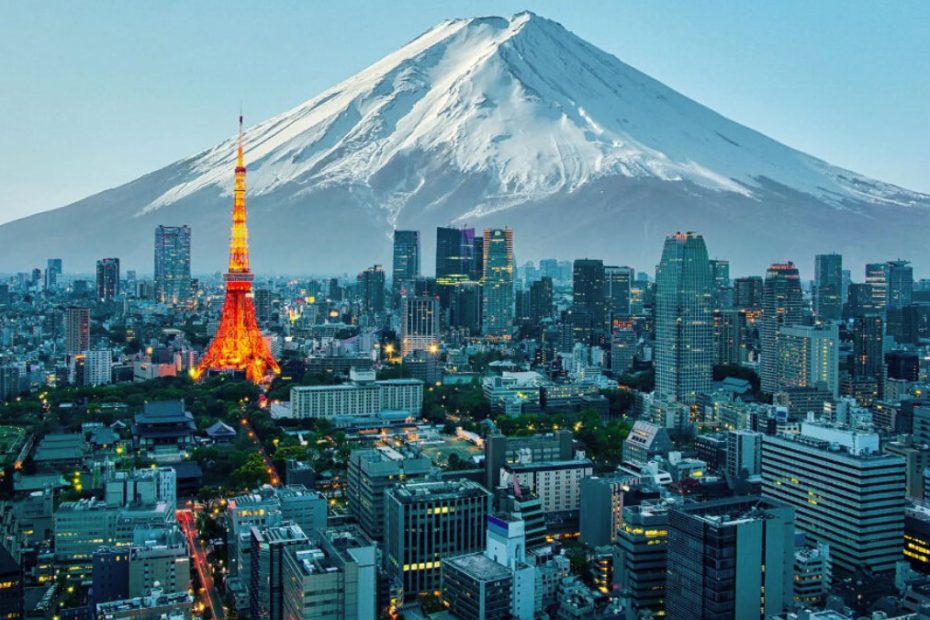Planning a trip to Japan can be both exciting and overwhelming, especially with so much to see and do. In just six days, you can experience a delightful blend of the country’s rich history, vibrant culture, and stunning landscapes. Whether you’re a first-time visitor or a seasoned traveler, this itinerary will help you make the most of your short stay.
Key Takeaways
- Diverse Experiences in Just 6 Days: The itinerary covers historical landmarks, cultural sites, and modern attractions, offering a well-rounded introduction to Japan’s rich heritage and contemporary marvels.
- Day-by-Day Itinerary: Detailed planning for each day includes visits to iconic locations such as Kyoto, Hakone, and Tokyo, ensuring each destination’s key highlights are explored efficiently.
- Cultural Depth: Emphasis on experiencing traditional aspects like Kyoto’s shrines, Tokyo’s temples, and Nara’s deer park highlights the cultural richness of Japan.
- Scenic Beauties: Inclusion of stunning natural landscapes like Arashiyama Bamboo Grove, Hakone’s hot springs, and the views from Tokyo Skytree ensures a visually enriching journey.
- Local Cuisine: Recommendations for savoring local foods in each region, such as snacks at Kyoto’s Nishiki Market and street food in Osaka’s Dotonbori, enrich the culinary experience.
- Travel Flexibility: Practical travel tips, including using bullet trains and local transit, maximize the efficiency of travel between destinations, allowing more time for exploration and enjoyment.
Overview Of The 6 Days Itinerary In Japan
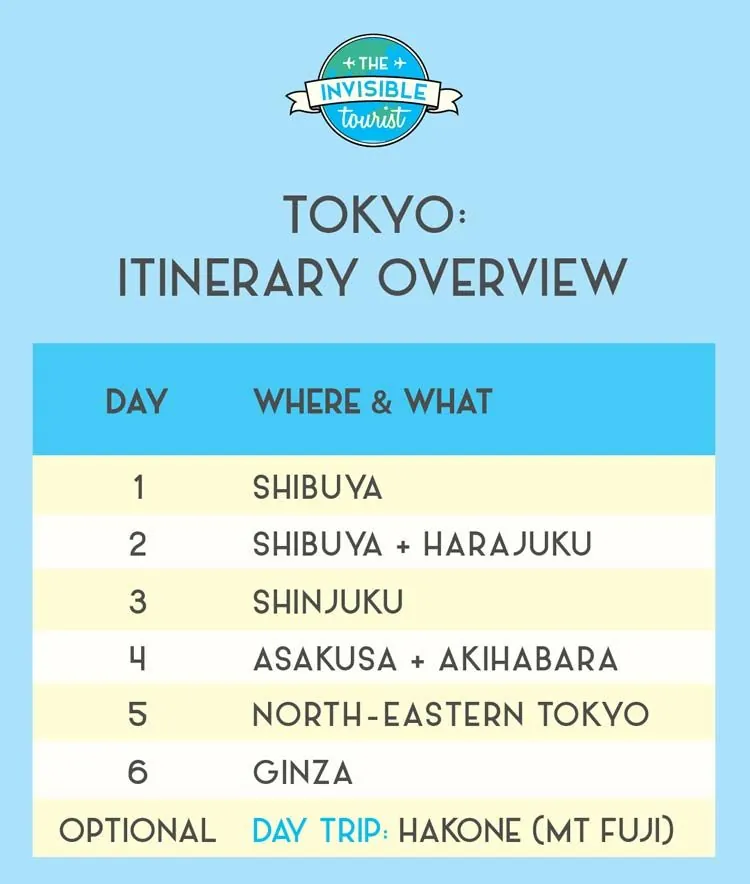
Embarking on a 6-day journey in Japan offers a rich world of experiences ranging from historical landmarks to modern attractions. I’ve found it essential to blend cultural insights with contemporary highlights to capture the essence of this vibrant country. Below is an organized day-by-day itinerary to ensure an engaging and diverse adventure.
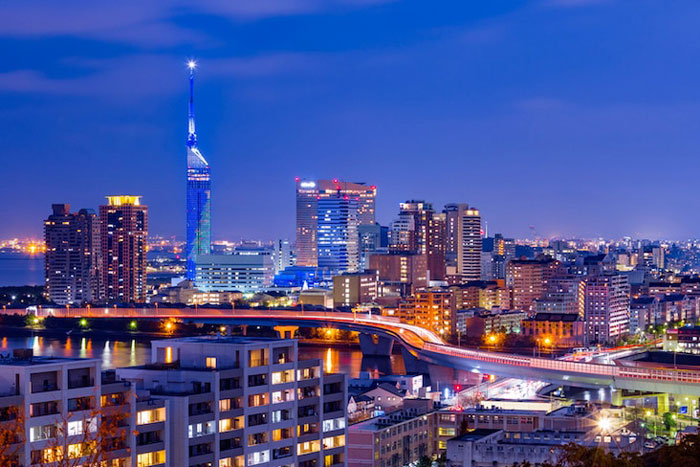
Day 1: Arrival and Travel to Kyoto
- Arrival in Tokyo: On the first day, I arrive in Tokyo, Japan’s bustling capital. Immediately after landing, I take the bullet train to Kyoto, a journey lasting about 2 hours and 40 minutes.
- Exploring Kyoto: Upon arrival, I visit Kyoto’s Nishiki Market, a historic marketplace offering a variety of traditional Japanese foods and crafts. Then I explore the Gion district, famous for its well-preserved architecture and geisha culture. The day wraps up with a visit to the Imperial Palace, surrounded by stunning gardens.
Days 2 & 3: Kyoto
- Fushimi Inari-taisha Shrine: Over the next two days, I investigate deeper into Kyoto’s heritage. I start with the Fushimi Inari-taisha Shrine, notable for its thousands of vibrant orange torii gates. These gates create a mesmerizing pathway leading up the mountain.
- Cuisine Exploration: While in Kyoto, I savor traditional Japanese cuisine. I make sure to sample snacks from local 7-Eleven stores, famous for their high-quality and diverse food options.
Day 4: Hakone
- Travel to Hakone: On day four, I take the bullet train to Hakone, another 2-hour journey. Known for its hot springs and natural beauty, Hakone is a peaceful retreat from the hustle and bustle of city life.
- Stay in a Ryokan: I stay in a traditional ryokan, a type of Japanese inn that offers communal baths (onsen) and scenic views. This provides an authentic and serene experience which is quintessential to Japanese culture.
- Return to Tokyo: The final two days are spent back in Tokyo. After another bullet train ride, I immerse myself in the city’s energetic atmosphere.
- Exploring Tokyo: In Tokyo, I explore a mixture of modern and historical sites, ensuring a balanced itinerary. This includes iconic locations like Shibuya Crossing, the bustling shopping district of Shinjuku, and the peaceful Meiji Shrine.
By structuring the trip this way, I ensure that each location is given the attention it deserves, making the most of the 6-day itinerary in Japan. This journey encompasses a blend of historical, cultural, and modern experiences, providing a comprehensive snapshot of Japan’s diverse offerings.
Day 1: Tokyo – Modern Marvels And Rich History
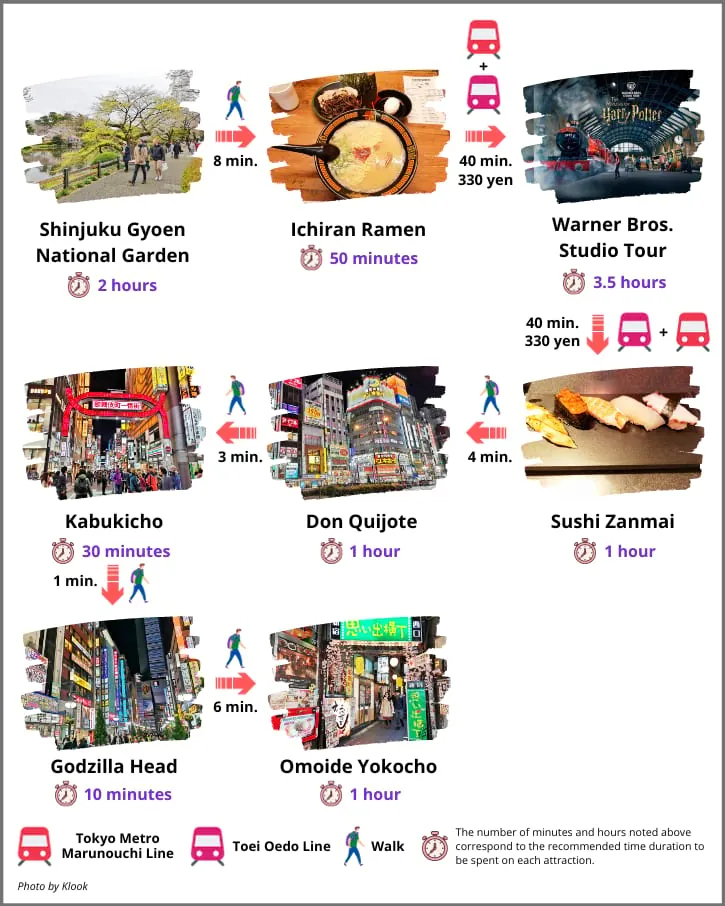
On the first day in Tokyo, I explored some of the city’s most vibrant and historic sites. From bustling intersections to ancient temples, there’s a mix of modern marvels and rich history.
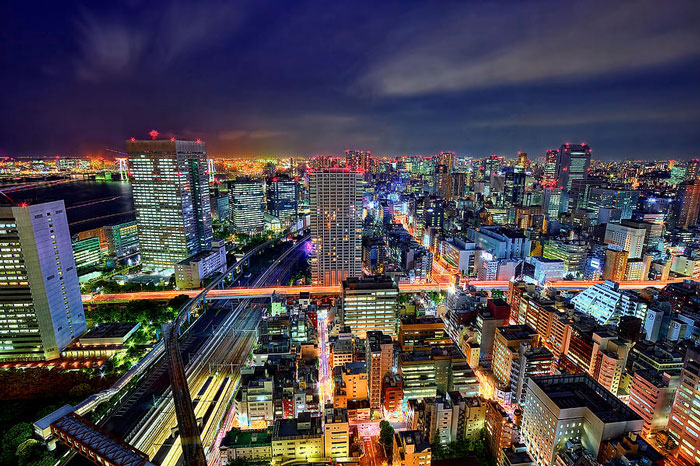
Explore Shibuya Crossing
I started the day at Shibuya Crossing, one of the busiest intersections in the world. This iconic spot is a must-see for anyone visiting Tokyo. As soon as the light turned green, I joined the sea of people crossing from all directions. The energy here is palpable, making it a thrilling start to the day.
Around Shibuya, there’s no shortage of things to do. I wandered through the Shibuya area, known for its vibrant shopping and entertainment districts. Stores like Shibuya 109 offer a vast selection of trendy fashion items, while the surrounding streets are packed with cafes and restaurants. Don’t miss the statue of Hachiko, the loyal dog whose story became a national legend. It’s right outside Shibuya Station and makes for a great photo opportunity.
Visit Senso-ji Temple
Next, I headed to Asakusa to visit the historic Senso-ji Temple, Tokyo’s oldest temple. The temple’s entrance, Kaminarimon Gate, features a massive lantern that’s perfect for snapshots. As I walked through the Nakamise shopping street leading up to the temple, I encountered stalls selling traditional snacks and souvenirs, offering a glimpse into Japan’s rich cultural heritage.
Reaching the main hall, I took in the stunning architecture and peaceful atmosphere. The smoke from the incense burners filled the air, creating a serene environment. Senso-ji stands as a testament to Tokyo’s enduring traditions amidst its modernization.
Discover The Tokyo Skytree
I ended my day at Tokyo Skytree, the tallest tower in the world. Standing at 634 meters, the view from its observation decks is unparalleled. I opted for the Tembo Deck, situated 350 meters high, where I enjoyed panoramic views of Tokyo. On clear days, one might even see Mount Fuji in the distance.
The Skytree isn’t just about the view. The complex also houses the Solamachi shopping mall, featuring a variety of shops and eateries. After soaking in the skyline, I took some time to explore the mall, indulging in local delicacies and shopping for unique souvenirs. It’s an experience that beautifully blends Tokyo’s modernity with its soaring ambition.
Day 2: Tokyo – Museums And Cultural Experiences
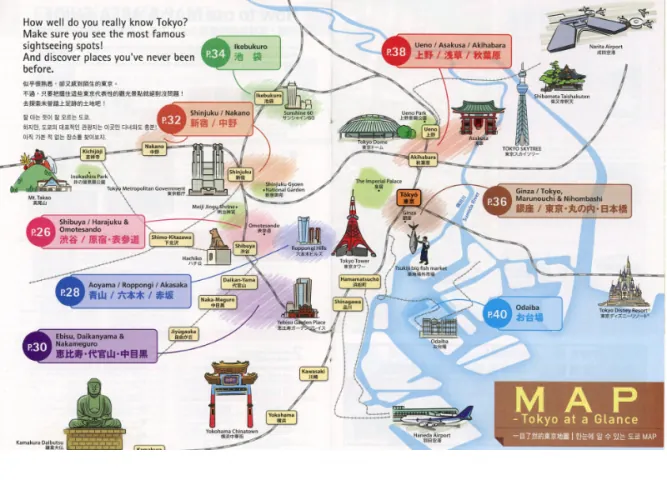
Day 2 in Tokyo blends scientific marvels, serene spiritual sites, and high-end shopping districts.
National Museum Of Emerging Science And Innovation
Located in Odaiba, the National Museum of Emerging Science and Innovation (Miraikan) showcases cutting-edge science and technology. As I wandered through its halls, the “Geo-Cosmos” exhibit captivated me with its 3D model of Earth. Using over 10 million pixels, it displayed real-time global data, making me feel like I was observing our planet from space. The Dome Theater impressed me with immersive 3D video displays that took me on a journey through cosmos and human innovation. This museum isn’t just for tech enthusiasts; its interactive exhibits engage visitors of all ages. From ASIMO, the humanoid robot, to a hands-on section on advancements in robotics and space exploration—Miraikan made me ponder our technological future.
Meiji Shrine
In the heart of bustling Tokyo, Meiji Shrine offers an escape into nature and history. Dedicated to Emperor Meiji and Empress Shoken, this serene oasis is accessible via a peaceful forest path. As I strolled along, the sights and scents of the blooming irises and hydrangeas in June invigorated my senses. Upon reaching the shrine, the towering torii gate welcomed me into a sacred space. Participating in traditional rituals like washing hands at the purification fountain and writing wishes on wooden ema plaques, I felt a deeper connection to Japanese culture. The tranquil surroundings offered a reflective experience, making Meiji Shrine a must-visit for anyone seeking peace amidst urban energy.
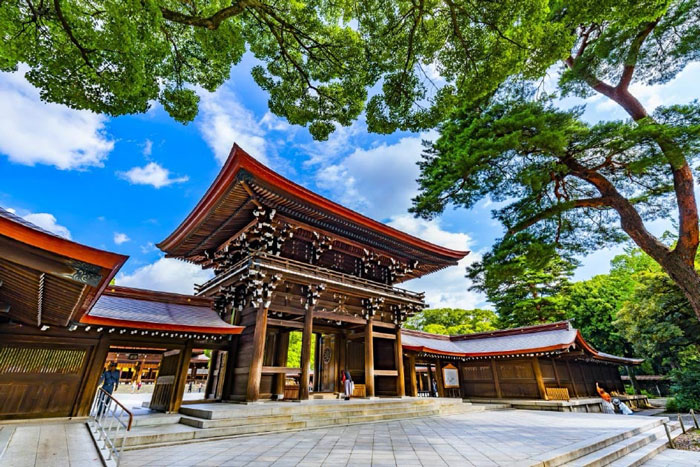
Ginza District
When the sun sets, Ginza District beckons with its blend of traditional and modern Tokyo. Famous for its high-end shopping and dining, Ginza’s vibrant atmosphere draws both locals and tourists. As I navigated through Ginza Crossing, the illuminated signs and bustling crowds immediately energized me. Department stores like Mitsukoshi and Ginza Wako presented luxury brands and unique Japanese products. The district’s culinary scene didn’t disappoint, offering everything from Michelin-starred restaurants to cozy izakayas. While enjoying a culinary delight or shopping spree, Ginza allowed me to appreciate Tokyo’s modernity while glimpsing its traditional roots.
Day 3: Kyoto – Historical And Scenic Wonders
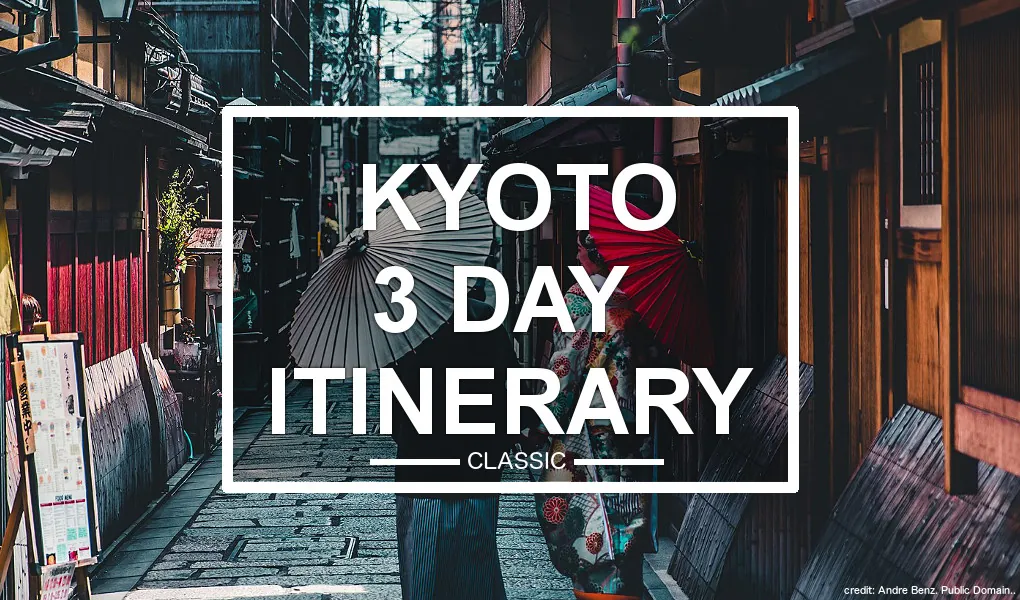
Day 3 in Kyoto promises a journey through rich history and breathtaking scenery. I discovered ancient shrines, iconic temples, and picturesque districts, each steeped in cultural significance.
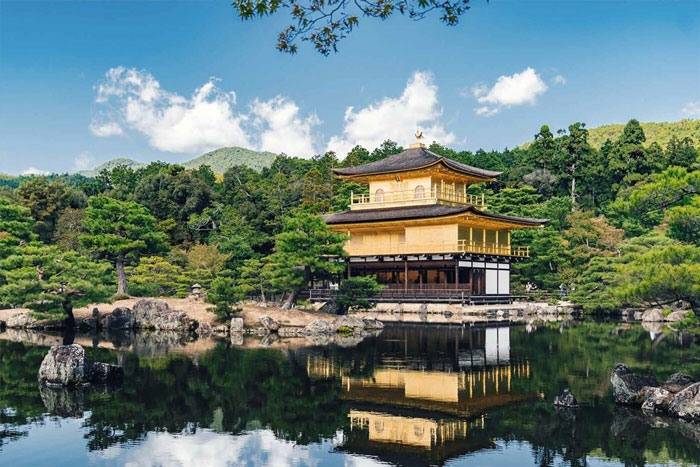
Fushimi Inari Shrine
Getting to Fushimi Inari Shrine is easy. I took the JR Nara line from Kyoto Station to Inari Station, just a 5-minute journey. Alternatively, you can use the Keihan line from Sanjo Station to Fushimi-Inari Station, a 10-minute trip costing ¥210.
Fushimi Inari Shrine amazed me with its thousands of vermilion torii gates, forming a tunnel up the mountain. This shrine is dedicated to Inari, the god of rice, symbolizing prosperity. As one of Kyoto’s most visited sites, it’s busy, especially during peak hours. Admission is free, but be ready for a moderate hike, as the torii path extends approximately 4 kilometers. The view from the top is worth the effort. Here are a few highlights:
- Senbon Torii: A dense section of torii gates creating a striking visual.
- Hike to the Summit: Offers panoramic views of Kyoto.
- Fox Statues: Representing the messengers of Inari.
Timing can affect your experience, so I recommend visiting early morning to avoid crowds.
Kiyomizu-Dera Temple
From Fushimi Inari, getting to Kiyomizu-Dera Temple is simple. I took a short taxi ride; it’s a convenient option if you want to save time.
Kiyomizu-Dera Temple, a UNESCO World Heritage site, stands as one of Kyoto’s most iconic landmarks. The temple is renowned for its wooden stage that juts out from the main hall, 13 meters above the hillside, offering stunning views of cherry and maple trees. The admission fee is ¥400. Here’s what you’ll find:
- Main Hall (Hondo): Houses the statue of Kannon, the goddess of mercy.
- Otowa Waterfall: Visitors drink from the stream, believing it grants wishes.
- Jishu Shrine: A shrine dedicated to the deity of love and matchmaking.
I found the temple’s architecture and surrounding nature awe-inspiring. To enjoy a quieter visit and catch the morning light, consider arriving before 10 AM.
Gion District
After exploring Kiyomizu-Dera, a visit to the Gion District rounded out my day. It’s a short walk from the temple and offers a glimpse into traditional Japanese culture.
Gion is famed for its preserved traditional wooden machiya houses and as the home of geiko (Kyoto dialect for geisha). Visitors often spot geiko and maiko (apprentice geisha) exploring the narrow streets. Key attractions include:
- Hanamikoji Street: The heart of Gion, lined with historic teahouses.
- Yasaka Shrine: A prominent Shinto shrine at Gion’s eastern end.
- Shirakawa Canal: A picturesque area ideal for evening strolls.
To better appreciate Gion’s charm, I suggest visiting in the late afternoon and staying until evening when lanterns illuminate the district, casting a magical glow.
Day 4: Kyoto – Temples And Bamboo Groves
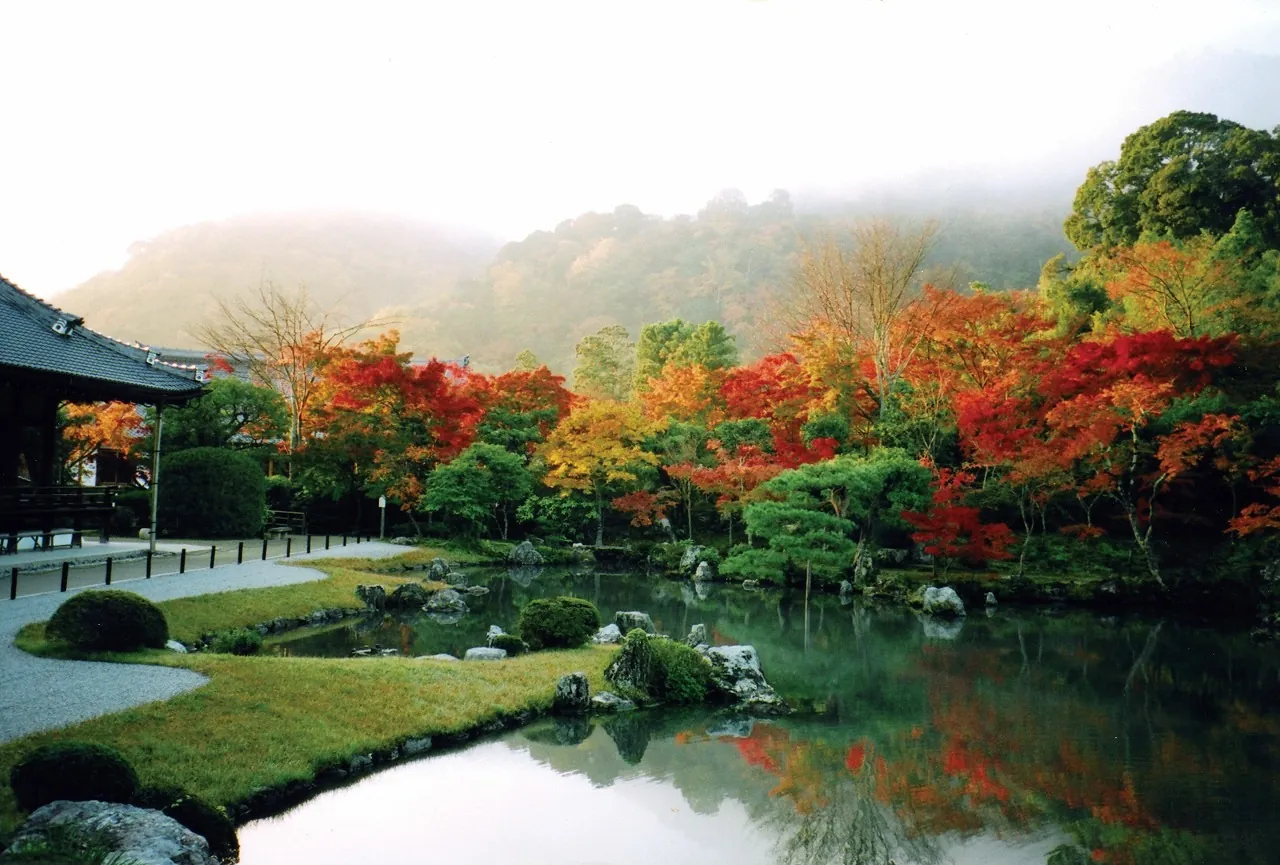
Day 4 in Kyoto is a journey through serene bamboo groves and iconic temples. This day promises an immersive cultural experience in Japan.
Arashiyama Bamboo Grove
Arashiyama Bamboo Grove, in the westernmost part of Kyoto, offers a serene and peaceful destination. The bamboo forest is easily accessible by taking the JR Sagano Line from Kyoto Station to Saga-Arashiyama Station. I recommend arriving early in the morning to avoid crowds and fully enjoy the tranquility. The tall bamboo stalks create a unique, calming atmosphere that’s perfect for a morning stroll. It feels like stepping into another world, surrounded by the gentle rustling of the bamboo leaves. Nearby, you can also visit the Tenryu-ji Temple and its beautiful gardens.
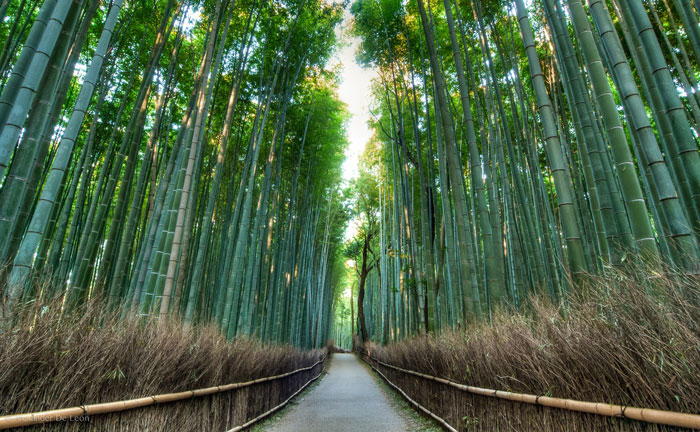
Golden Pavilion (Kinkaku-ji)
The Golden Pavilion, or Kinkaku-ji, stands out with its stunning golden reflection in the pond. Known as one of Kyoto’s most iconic temples, it’s accessible by bus from Kyoto Station or most hotels, with the ride taking around 30-40 minutes. As you explore the temple grounds, you’ll find meticulously maintained gardens and traditional tea houses. The top two floors of the pavilion are covered in gold leaf, making it a breathtaking sight, especially on sunny days. Don’t miss the Sekkatei Teahouse and the Anmintaku Pond, which add to the temple’s charm and history.
Nijo Castle
Nijo Castle is a testament to Kyoto’s rich history, constructed in 1603 as the residence of the first Tokugawa Shogun. It’s a UNESCO World Heritage Site known for its well-preserved Ninomaru Palace and beautiful gardens. The palace floors feature “nightingale floors” that chirp when walked upon, designed to alert occupants to intruders. It’s conveniently accessible by bus or a short taxi ride from central Kyoto. Exploring its extensive grounds and buildings, I marveled at the intricate woodwork and historical significance. The gardens are particularly stunning in spring and autumn, enhancing the overall experience.
Day 5: Osaka – Vibrant Urban Experiences
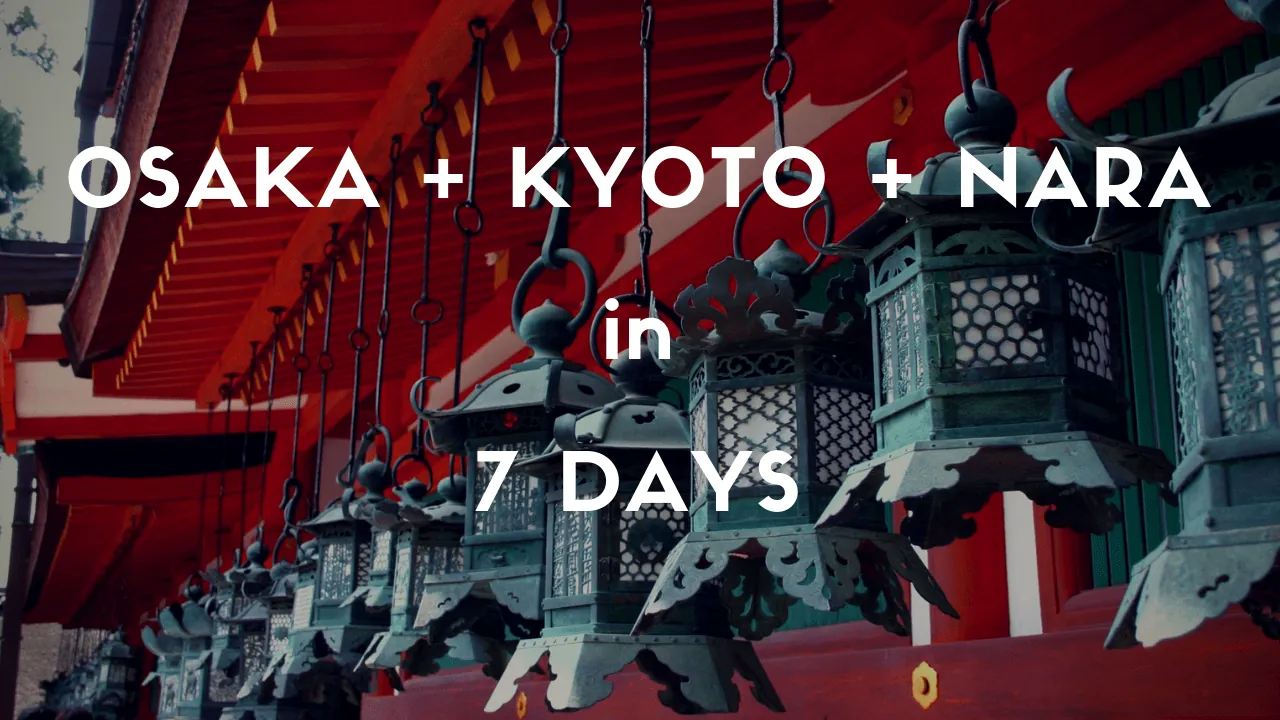
Day 5 focuses on Osaka’s cultural icons and bustling urban life. The city offers a mix of history, entertainment, and culinary delights.
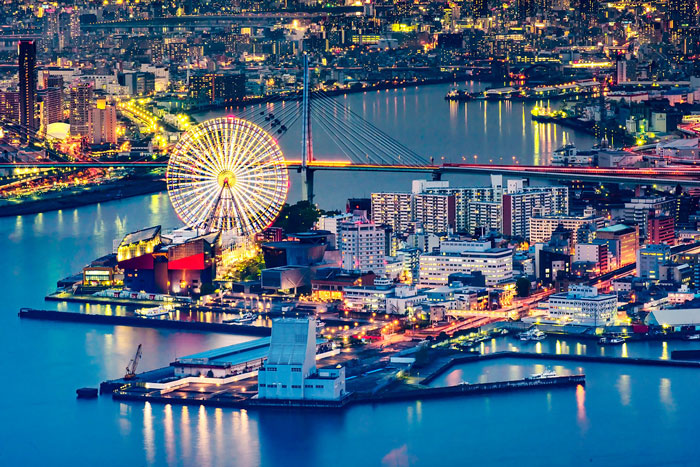
Osaka Castle
I started my day at Osaka Castle, one of Japan’s most famous landmarks. This architectural marvel provided a fascinating look into Japan’s history. Each floor of the castle’s interior presented different historical aspects, from samurai armor to intricate artifacts.
In the tranquil Nishinomaru Garden, the peaceful surroundings made it an ideal spot for relaxation. Cherry blossom viewing here in spring created a truly picturesque scene.
Dotonbori Street
In the afternoon, I headed to Dotonbori, the heart of Osaka’s entertainment and gastronomy. Walking along the Dotonbori River, I was mesmerized by the vibrant neon lights and extravagant signboards that encapsulate Osaka’s lively spirit.
Indulging in local street food was a must. I enjoyed Takoyaki (octopus balls) and Okonomiyaki (savory pancake), savoring the unique flavors of Osaka. Visiting the iconic Glico Man sign offered a perfect photo opportunity to capture the essence of the city.
Umeda Sky Building
Later, I visited the Umeda Sky Building, a landmark known for its unique architectural design. The observation deck provided panoramic views of Osaka’s skyline, especially beautiful during sunset.
The Floating Garden Observatory allowed me to take in the city’s scenery from above, a striking contrast to the bustling streets below. Exploring the building’s shops and dining options added to the urban experience, making it a memorable end to my day.
Day 6: Nara – Ancient Capital And Deer Park
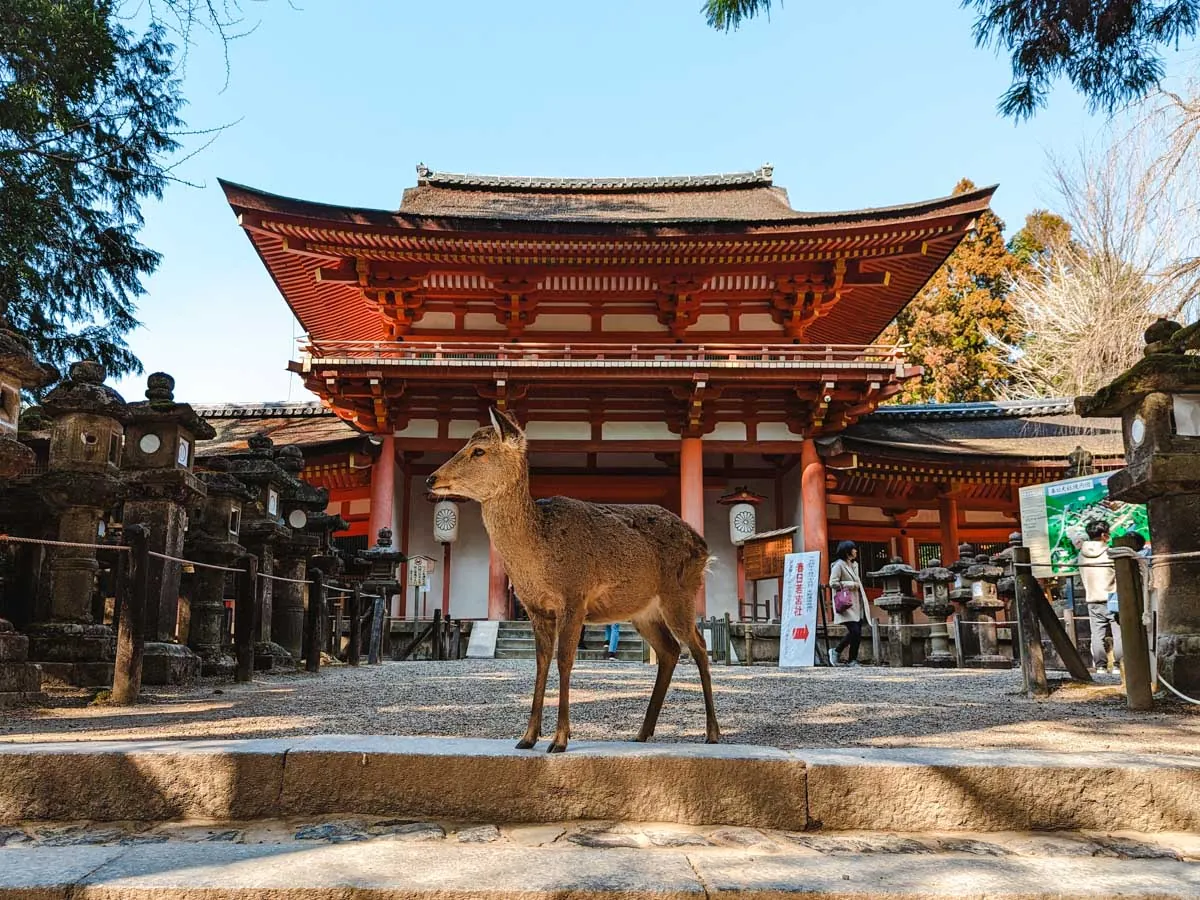
On Day 6, I recommend dedicating your itinerary to exploring Nara, renowned for its historical significance and enchanting deer park. To get the most out of your visit, start from Kyoto or Osaka and arrive in Nara early in the morning.
Todai-ji Temple
Begin your day at Todai-ji Temple, a UNESCO World Heritage site known globally. Housing the Great Buddha of Nara, it impresses with its massive structure and cultural importance. From JR Nara Station, it’s a quick 20-minute walk on the Kintetsu Nara Line.
As you approach, the immense wooden entrance gate, Nandaimon, draws attention. It’s guarded by fierce-looking statues of Nio deities. Entering the Daibutsuden (Great Buddha Hall), you’ll find the immense bronze statue sitting serenely. At 49.1 feet (15 meters) tall, the Daibutsu (Great Buddha) is one of the largest bronze statues in the world.
The temple also boasts other historical structures, picturesque gardens, and fascinating museum collections. While there, don’t miss the chance to walk around the premises and enjoy the surrounding architectural splendor.
Nara Park
After your enriching visit to Todai-ji Temple, head to Nara Park, home to over 1,200 free-roaming deer. Nara Park’s expansive grounds offer scenic paths where you can stroll and enjoy the natural beauty. These friendly deer, considered sacred messengers of the gods according to Shinto belief, approach visitors eagerly.
Visitors often feed them special deer crackers, available from street vendors. The experience of feeding and interacting with these gentle animals is memorable and unique to Nara. The beautiful park also provides calming scenery with numerous photo opportunities, especially during cherry blossom and autumn foliage seasons.
Kasuga Taisha Shrine
Next on the agenda is Kasuga Taisha Shrine, located within Nara Park. This Shinto shrine, established in 768 AD, is best known for its many stone and bronze lanterns lining the pathways. These lanterns are lit during the biannual lantern festivals in February and August, creating a stunning visual spectacle.
Inside the shrine complex, you’ll find beautiful vermilion buildings and treasure halls housing historical artifacts. The inner area charges a small entrance fee but offers more insights into the shrine’s rich history and significance.
The serene environment around Kasuga Taisha, combined with the surrounding forest and wildlife, provides a tranquil retreat from bustling areas. Exploring its sacred halls and lush surroundings concludes your day in Nara, leaving you enriched by the city’s deep cultural and historical heritage.
Conclusion
My 6-day itinerary in Japan offers a perfect blend of cultural immersion and natural beauty. From the bustling streets of Tokyo to the serene temples of Nara every moment is packed with unique experiences. Whether you’re marveling at historical landmarks or interacting with friendly deer in Nara Park Japan’s charm is undeniable. This itinerary ensures you get a comprehensive taste of what this incredible country has to offer. So pack your bags and get ready for an unforgettable adventure in Japan!
Frequently Asked Questions
What is the main attraction at Todai-ji Temple?
The main attraction at Todai-ji Temple is the Great Buddha of Nara, one of the largest bronze Buddha statues in Japan. The temple itself is a UNESCO World Heritage site, renowned for its impressive architecture and historical significance.
Can you interact with the deer in Nara Park?
Yes, you can interact with the deer in Nara Park. The park is home to over 1,200 free-roaming deer, which are considered sacred. You can feed them special deer crackers (shika senbei) available for purchase at the park.
What makes Kasuga Taisha Shrine unique?
Kasuga Taisha Shrine is unique for its thousands of stone and bronze lanterns lining the pathways and hanging in the shrine buildings. The serene environment and beautiful lanterns make it a peaceful and picturesque location to visit.
How much time should I allocate for visiting Todai-ji Temple and Nara Park?
It is recommended to allocate at least half a day to fully enjoy Todai-ji Temple and Nara Park. This allows you ample time to explore the temple grounds, interact with the deer, and experience the scenic beauty of the park.
Are there any other attractions near Todai-ji Temple?
Yes, aside from Todai-ji Temple, you can explore several other historical structures and picturesque gardens within the temple premises. Todaiji Nigatsudo Hall and the Todai-ji Museum are also worth visiting.
Is Nara Park suitable for families with children?
Absolutely, Nara Park is great for families with children. The park offers ample space for kids to run around and interact with the friendly deer. It’s a unique and educational experience for children.
How do I get to Todai-ji Temple from Nara Station?
From Nara Station, you can take a short bus ride or a 20-minute walk to reach Todai-ji Temple. Buses frequently run from the station and drop you off near the temple entrance.
What is the best time to visit Nara?
Spring (March to May) and autumn (September to November) are the best times to visit Nara. The weather is pleasant, and you can enjoy the cherry blossoms in spring and colorful foliage in autumn.

